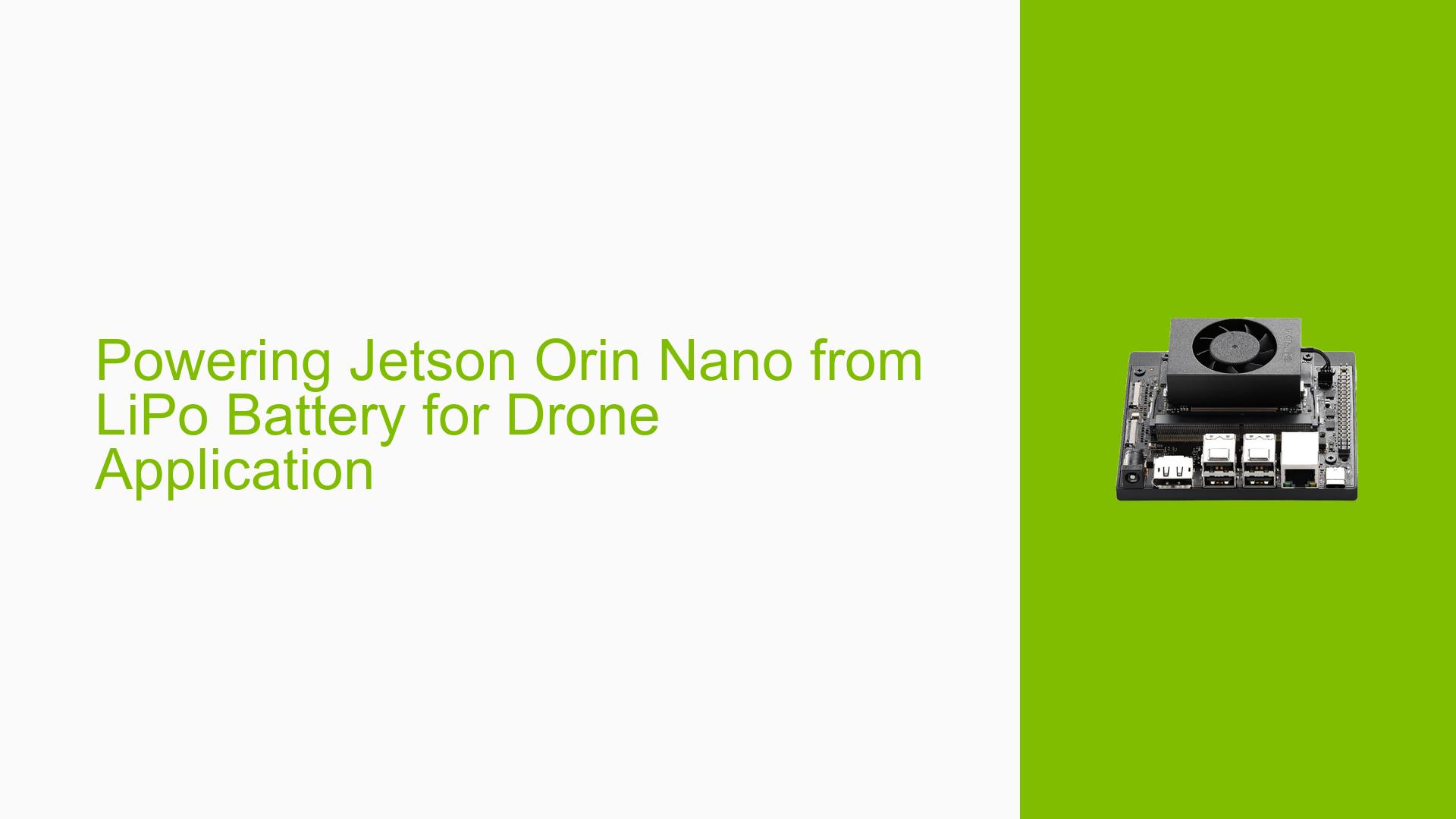Powering Jetson Orin Nano from LiPo Battery for Drone Application
Issue Overview
Users are seeking guidance on powering the Nvidia Jetson Orin Nano development kit from a LiPo battery for drone applications. The specific scenario involves using a 4S (14.8V) LiPo battery connected to a Holybro PDB01 power distribution board. Users are concerned about the safety and feasibility of connecting the Jetson Orin Nano directly to the power distribution board, which is equivalent to connecting it directly to the 14.8V LiPo battery. There are questions about potential current draw issues and voltage stability that could affect the Jetson’s performance or potentially damage the device.
Possible Causes
-
Voltage Instability: LiPo batteries can experience voltage fluctuations during discharge, potentially causing issues with sensitive electronics.
-
Excessive Current Draw: Concerns about the power distribution board providing too much current to the Jetson, potentially damaging the device.
-
Lack of Voltage Regulation: Direct connection to the battery without proper voltage regulation could lead to power supply issues for the Jetson.
-
Insufficient Power Supply Knowledge: Users may not be fully aware of the Jetson Orin Nano’s power requirements and tolerances.
Troubleshooting Steps, Solutions & Fixes
Understand Jetson Orin Nano Power Requirements
-
Refer to the official Orin Nano Design Guide and module datasheet in DLC 18 for detailed power specifications.
-
Note that the Jetson Orin Nano has a power supply range of 5-20V.
-
The maximum current draw (IDDmax) for the Jetson Orin Nano is 5A, but actual current consumption depends on the specific use case.
Direct Battery Connection Considerations
-
The 4S (14.8V) LiPo battery voltage falls within the Jetson’s 5-20V input range, making direct connection possible.
-
Ensure that the voltage remains stable and within the 5-20V range throughout the entire usage process.
-
LiPo battery output is generally stable, but consider voltage fluctuations during discharge.
Implementing a Stable Power Supply
-
Use a buck converter between the LiPo battery and the Jetson Orin Nano to ensure a stable voltage supply.
-
When using a buck converter, set the output voltage to a stable value within the 5-20V range.
-
Ensure that the chosen buck converter can handle the maximum current draw of 5A for the Jetson Orin Nano.
Best Practices for Power Management
-
Always prioritize a stable power supply to protect components, including voltage regulators.
-
Monitor the battery voltage during operation to ensure it remains within the safe operating range for the Jetson.
-
Consider implementing a low-voltage cutoff to prevent over-discharging the LiPo battery and ensure stable power to the Jetson.
Carrier Board Considerations
-
The Jetson Orin Nano development kit’s carrier board likely includes some voltage regulation.
-
Despite onboard regulation, it’s still crucial to provide a stable input voltage to the carrier board for optimal performance and protection of components.
Code Example for Voltage Monitoring
If you decide to implement voltage monitoring in your drone application, you can use the following Python script as a starting point:
import Jetson.GPIO as GPIO
import time
# Set up GPIO for analog reading (assuming you have an ADC connected)
GPIO.setmode(GPIO.BOARD)
BATTERY_PIN = 18 # Replace with your actual pin number
def read_battery_voltage():
# Replace this with actual code to read voltage from your ADC
return 14.8 # Example voltage
def main():
while True:
voltage = read_battery_voltage()
print(f"Current battery voltage: {voltage:.2f}V")
if voltage < 12.0: # Example low voltage threshold
print("Warning: Low battery voltage!")
time.sleep(5) # Check every 5 seconds
if __name__ == "__main__":
try:
main()
except KeyboardInterrupt:
GPIO.cleanup()
This script provides a basic framework for monitoring battery voltage. You’ll need to adapt it to work with your specific hardware setup and ADC implementation.
By following these guidelines and implementing proper power management, you can safely power your Jetson Orin Nano from a LiPo battery in your drone application while ensuring stable and reliable operation.
